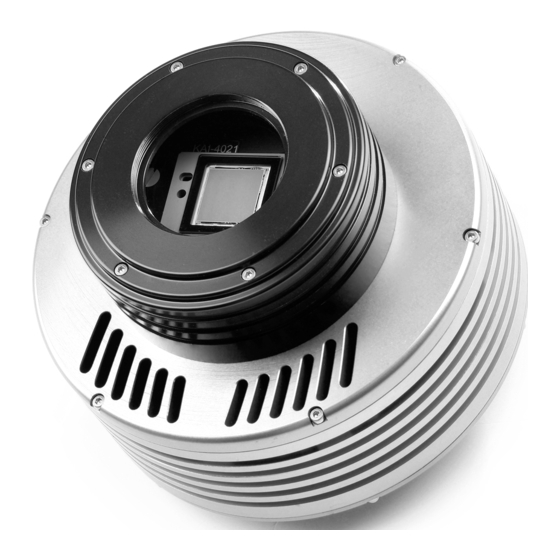ATIK Cameras 11000 빠른 시작 매뉴얼 - 페이지 2
{카테고리_이름} ATIK Cameras 11000에 대한 빠른 시작 매뉴얼을 온라인으로 검색하거나 PDF를 다운로드하세요. ATIK Cameras 11000 2 페이지. Large format camera
ATIK Cameras 11000에 대해서도 마찬가지입니다: 사용자 설명서 (10 페이지), 빠른 시작 매뉴얼 (20 페이지)

The above image is the Menu and Buttons of the application. From left to right, the buttons are:
Save: Saves the current image
Autosave: Autosaves all captured images, as per the data on the Exposure window
Display: Toggles display window on/off
Exposure: Toggles the exposure window on/off
Cooling: Controls the cooling system
Sub-frame: Selects a specific area of the image instead of the full frame. Useful for focusing.
Lock: Locks all exposure settings
Expose: Initiates the exposure of the duration selected in the exposure window
Loop: Toggles the loop exposure on/off. Useful for focusing and capturing sequences
Another interesting feature is the "Quick" menu. By pressing F1-F8, you will start
immediately an exposure of the predetermined duration, either in full resolution or in
binning 2x2.
The first image
Before doing anything, you should start up the cooling system. Select the desired temperature, and click on
the "Cooler on" button on the window. Please read the PDF manual on the CD for important information
on the cooling system performance and operation.
To start, center your telescope visually on a moderately bright star. Put the camera on the telescope's focuser
and press the F1 key. This will immediately initiate an 0.1s exposure. When complete, you should see a
strongly defocused star in your computer screen. Congratulations! Everything is working as expected. If
the star is grossly saturated (completely white circle), then you should manually select a smaller exposure
on the Exposure window.
Focusing
Depending on how defocused is your star, click on the Sub-frame button, and select an area around the star.
This will limit the data size being downloaded to the computer, making it much
faster.
Click on the Loop button and then on the Expose button. This will start an exposure
that wil repeat itself until the Loop button is pressed again. Focus your telescope
until the star looks like a star, and not a large circle.
Artemis Capture offers a simple tool to help you achieve precise focus. Under the
"View" menu, there is a Focus Assist option. Basically, it measures the star bright-
ness and width, displaying the values. Best focus should be achieved when you
have the smallest star width and the highest brightness level. To use this feature,
simply double click on a nearly focused star.
Centering and final exposure
Assuming that your target object is already in the field of view of the CCD, you should now do a longer
exposure to aid you in centering. It will depend on your telescope configuration, but 5 seconds should be
enough to record the position of most bright deepsky objects. Binning also helps here.
After centering, is time for the final exposure. It's duration will also depend on many things, but you'll want
to do the longest exposure that your system can do, depending of course of the object being imaged. For
example, a 5 minute exposure on the Andromeda galaxy will burn out the core for sure, but it will nicely
record the outer arms. You can do 2 exposures of different lengths, and then combine them on a processing
software, but that's another story... ;-)
